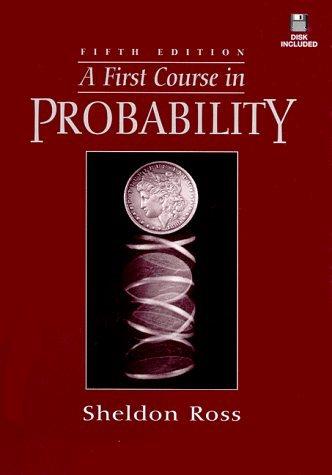19. The Ballot Problem. In an election, candidate A receives n votes and candidate B receives m...
Question:
19. The Ballot Problem. In an election, candidate A receives n votes and candidate B receives m votes, where n > m. Assuming that all of the (n + m)!/n! m!
orderings of the votes are equally likely, let P, denote the probability that A is always ahead in the counting of the votes.
(a) Compute P2,1, P3,1, P3,2, P4,1, P4,2, P4,3
(b) Find Pn,1, Pn,2.
(c) Based on your results in parts
(a) and (b), conjecture the value of Pn,m
(d) Derive a recursion for Pn,m in terms of Pn-1,m and Pn-1,m-1 by condition-
ing on who receives the last vote.
(e) Use part
(d) to verify your conjecture in part
(c) by an induction proof on n + m.
Fantastic news! We've Found the answer you've been seeking!
Step by Step Answer:
Related Book For 

Question Posted:






